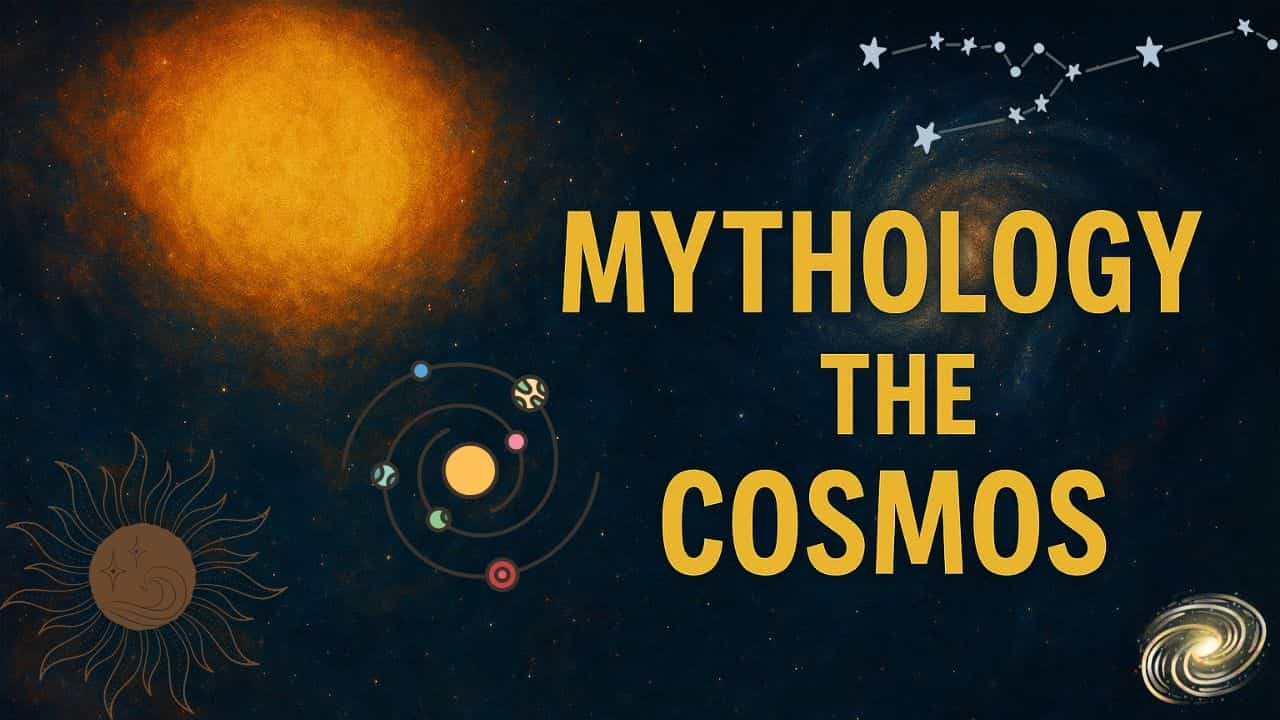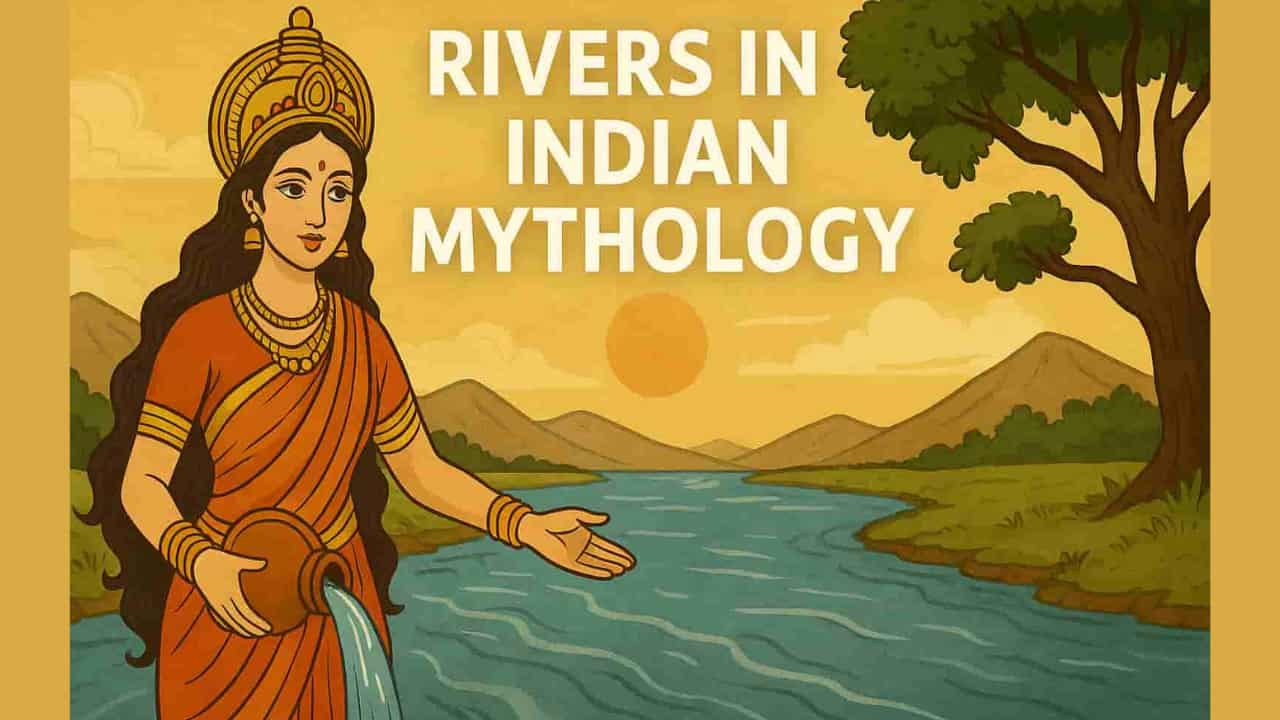Mythology and the Cosmos: The Search

Long before telescopes, satellites, or space observatories, human beings looked up at the night sky with wonder. The stars, the moon, the endless stretch of darkness, these were not empty spaces but filled with meaning, stories, and gods.
Mythology became humanity’s earliest way of explaining the mysteries of the cosmos. Why does the sun rise? What lies beyond the horizon? Where do we go after death?
Ancient cultures, from India to Greece, Egypt to Scandinavia, answered these questions with myths. These stories were not just entertainment; they were cosmic maps that helped people understand their place in the universe.
Hindu Cosmology: Yugas and Endless Cycles
In Hindu mythology, time is not linear but cyclical. The universe moves through four great ages, known as Yugas: Satya, Treta, Dvapara, and Kali.
Each Yuga represents a decline in virtue, wisdom, and spiritual strength. The present age, Kali Yuga, is seen as an era of darkness, where greed and conflict dominate. Yet, the cycle does not end here. After Kali Yuga, the universe is renewed with another Satya Yuga, symbolizing eternal rebirth.
The concept of Yugas reflects a worldview that sees the cosmos not as finite but as infinite, where creation, preservation, and destruction happen again and again.
Lord Vishnu, through his avatars, ensures the balance of this cosmic rhythm. This cyclical idea of time contrasts strongly with Western traditions, which often imagine time as a straight line beginning with creation and ending with apocalypse.
Ragnarok: The Norse End of the World
In Norse mythology, the cosmos too is destined to end, but in a violent and dramatic way.
Ragnarok, often described as the “Twilight of the Gods,” foretells the final battle between gods, giants, and monsters. Wolves swallow the sun and moon, the great serpent Jörmungandr rises from the ocean, and Fenrir the wolf kills Odin. Yet, even in this destruction, there is hope. After Ragnarok, the earth will rise again from the sea, green and fertile, ready for a new beginning.
Ragnarok shows the Norse people’s deep connection with nature’s harsh cycle, harsh winters, storms, and unpredictability. Their myths emphasize resilience: even when the world ends, life will start again.
Egyptian Creation Myths: Order from Chaos
The Egyptians, living along the Nile, developed one of the richest mythologies of the cosmos. They believed the universe began in a dark, watery chaos called Nun.
From this formlessness emerged the sun god Ra, bringing light and order. The gods Shu (air) and Tefnut (moisture), Geb (earth), and Nut (sky) followed, creating the structure of the world.
The Egyptian cosmos was built on balance, known as Ma’at. Without Ma’at, chaos threatened to return. This belief shaped their daily lives, laws, and rituals. The sun’s daily journey across the sky was also a cosmic drama: Ra sailed in his solar boat, battling the serpent Apophis, who tried to swallow the sun. Every sunrise, therefore, was seen as a victory of order over chaos.
The Greek Titans and the Birth of the Universe
In Greek mythology, the universe began with Chaos, a vast emptiness. From Chaos came Gaia (earth), Uranus (sky), and other primordial beings. Their union gave birth to the Titans, who ruled before the Olympian gods.
Eventually, Zeus and his siblings overthrew the Titans, establishing a new cosmic order.
This story reflects themes of conflict and succession, showing how even the universe itself was shaped by struggles for power. The Greek cosmos is dynamic, where gods and forces constantly fight, evolve, and redefine the structure of the world.
The Aztec Sun Cycles
In Mesoamerican mythology, the Aztecs believed the world had gone through several suns, or cosmic ages, each destroyed by a cataclysm.
The first sun was destroyed by jaguars, the second by wind, the third by fire, and the fourth by floods. The current world, the Fifth Sun, was created when the gods sacrificed themselves to reignite the sun.
For the Aztecs, sacrifice was not just ritual but cosmic necessity. They believed the sun required nourishment through offerings, especially human blood, to keep shining. This worldview reflected their deep fear of cosmic collapse and their belief that human action was vital to sustain the universe.
Chinese Mythology: Cosmic Balance and the Dragon
In Chinese mythology, the cosmos was shaped by balance. The concept of Yin and Yang symbolized the dual forces that maintained harmony, dark and light, feminine and masculine, earth and sky.
Creation myths speak of Pangu, a giant who emerged from the cosmic egg. When he died, his body transformed into different parts of the universe: his breath became the wind, his eyes the sun and moon, his blood the rivers, and his body the mountains.
Dragons, central in Chinese myths, were also cosmic beings, controlling rainfall and representing the life-giving energy of the heavens. Unlike the destructive dragons of European lore, Chinese dragons symbolized cosmic order, prosperity, and balance.
The Mayan Cosmos: Time and Sacred Calendars
The Maya, known for their advanced astronomical knowledge, saw the cosmos as deeply tied to cycles of time. Their calendar systems tracked not only agricultural seasons but also spiritual patterns.
Myths describe the Hero Twins, Hunahpu and Xbalanque, who journeyed through the underworld, defeated its lords, and rose again as the sun and moon.
For the Maya, the cosmos was not distant but directly linked to human destiny. Time itself was sacred, and cosmic events like eclipses or solstices carried divine meaning. Their pyramids and temples were aligned with celestial movements, turning architecture into a map of the universe.
The Cosmos as a Reflection of Human Life
A striking feature across cultures is how cosmic myths mirror human experience. The battles of gods echo human struggles, the cycles of creation and destruction reflect natural seasons, and the balance of chaos and order mirrors the challenges of society.
Mythology turned the incomprehensible vastness of the cosmos into familiar stories, allowing people to live with awe rather than fear.
Mythology and the Cosmos: Modern Interpretations
Today, we understand the universe through science, with theories of the Big Bang, black holes, and expanding galaxies. Yet ancient myths continue to resonate. They remind us that the cosmos is not just a physical space but also a source of meaning.
Films, novels, and even scientific metaphors still borrow from these myths; terms like “chaos,” “titans,” or “Ragnarok” appear in modern storytelling and space exploration projects.
By blending mythology with modern knowledge, we see that both science and myth share the same root: the desire to understand where we come from and where we are headed.
Mythology and the Cosmos: Eternal Wonder of the Universe
The cosmos has always been humanity’s greatest mystery. From the Yugas of Hinduism to Ragnarok, from the Egyptian sun boat to the Greek Titans, from Aztec suns to Chinese dragons, myths show the infinite creativity with which humans explained the skies. These stories are not outdated; they are timeless reminders of our need to connect with the larger universe.
While science gives us equations and telescopes, mythology gives us meaning and imagination. Together, they create a fuller picture of existence, where the cosmos is not just a space of stars and planets but also a canvas for human wonder.

